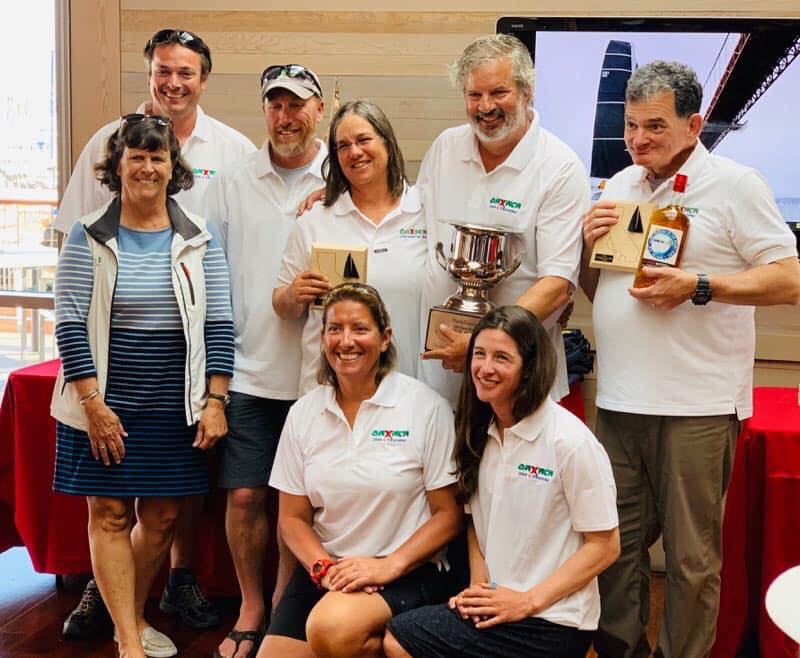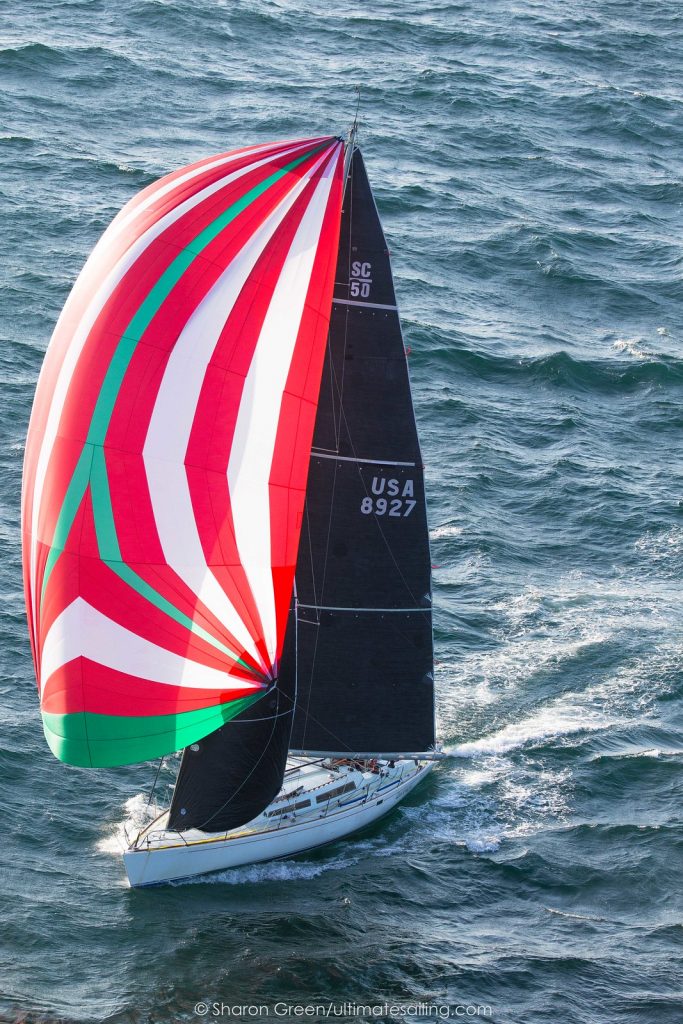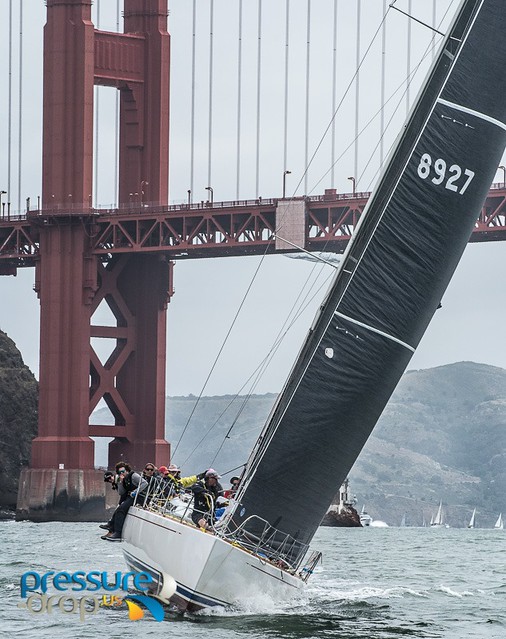
California Offshore Race Week extends along a coastline that has been referred to as the Blue Serengeti. The California current brings nutrient-rich waters and long-term oceanic cycles that have produced highly variable conditions. This rich ecosystem teems with sharks, seals, tunas, whales, albatross and sea turtles.
Racing from San Francisco down the California Coast to San Diego, there were 70+ boats, 500+ sailors, 3 races and a week of exciting racing. I joined the Santa Cruz 50 Oaxaca and we were one of several teams using the California Offshore Race Week as training and preparation for this summer’s 50th edition of the Transpac Race. The Spinnaker Cup is the first of the three races, followed by the Coastal Cup and then the SoCal 300 to round out the week.
After a short delay for the wind to fill in, 40 boats crossed the start line just off Angel Island in San Francisco Bay. 7 classes headed out to the Golden Gate Bridge in building pressure before turning south with the wind veering and a run all the way to Monterey. The dilemma of when to bear away and set the spinnaker is always pressure for the navigator and ours, Liz Baylis, did not buckle as the crew watched our competition soak away early; she held out to make the good call of keeping us sailing in more pressure and powering down the coast to the finish in the bay. Winds went light towards the end of this 84 mile leg and we discovered the dreaded kelp on our way in to the line, slowing us before the finish.
Our competitive Santa Cruz 50/52 class kept the racing tight. As experienced teams from Northern California racing this course, Lucky Duck and Deception, joined us in battle. We all finished within 13 minutes of each other and corrected to even closer with our skipper, Michael Moradzadeh, and our race yacht Oaxaca taking the class win despite sailing the most miles.
Confident with our boat speed, we spent some time the next day checking the boat and doing the small jobs required before we started race 2 of the series, the Coastal Cup.

This year’s Coastal Cup, from Monterey to Santa Barbara, was the fastest race in the recent 5 year history, with new elapsed time, and ORR corrected times established by three different boats. In fact, the first 15 finishers all eclipsed the previous record from 2017. That included us onboard Oaxaca, however the course of 204 miles is not an easy ride. You feel as if you being tested to the limit in strong downwind conditions and then, after all the hard work as you round the final corner at Point Conception, the wind dies and you work even harder at drifting in to the finish line off Santa Barbara.
It was a fruity ride down the coast with building breeze. The night was dark with no moon to speak of and full cloud cover. The wind gusted to over 30 knots at times and boat speeds were in the high teens and early twenties for most of the race. We did not sail a clean race and experienced a potentially very serious incident, more about that to come soon, but we kept up a good fight. The breeze held longer than we anticipated, and it was just the final 7 miles where we had the wind drop suddenly and had to ghost our way over the line, making us work hard with many sail changes for an already weary bow team. The effort was worth it as we managed to salvage a second place in class.
It was a welcome day off in Santa Barbara to check through sails, dry equipment and clothing and prepare ourselves once more for the final race of the series, the SoCal 300. This race was broken down into three stages along the course covering 245 miles and passing through a few islands and hazards along the way from Santa Barbara to San Diego. The race is in its 5th year, and had a record 38 boats competing in 7 classes with many California boats using the race as a Transpac Race qualifier.
The conditions involved a light wind start and much avoidance of large kelp beds and patches. We then had wind acceleration as we passed between the islands leaving gate one for gate two in tight reaching conditions. The final leg headed east into the finish line in the channel to San Diego and the wind only got lighter. Our competition was all around us and we played the puffs of pressure as best as we could. Fighting to keep Oaxaca moving and changing gears and sails as often as required, keeping weight low down and forward. Focus was easy as we had our competitors all around us, so we just had to stay with them. Another finish in the dark and by the time we had reached the dock it was midnight and we were not confident about our rankings. A good result was possible but no one dared to say anything. It was the next morning that the celebrations could begin and the smiles didn’t leave our faces all day.

The Santa Cruz 50/52 class have been the mainstay in the CA Offshore Race Week since the beginning. Dave MacEwen’s Lucky Duck and Bill Helvestine’s Deception have raced all 4 of the series since it began in 2016 and they were our experienced competitors. This year in the Santa Cruz class, the series belonged to our skipper, Michael Moradzadeh and his Santa Cruz 50 Oaxaca. We were placed first in the Spinnaker Cup, 2nd in Coastal Cup, 1st in the SoCal 300 and 1st in the Series for the Santa Cruz class and 3rd place overall in the series. A great achievement by a great team and I can’t wait to head back out in July for the Transpac Race and see if we can continue the momentum.